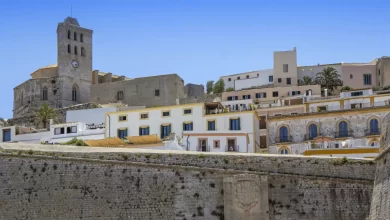Corvin Castle, also known as Hunyadi Castle or Hunedoara Castle, stands as a testament to the architectural prowess and historical significance of Romania. This Gothic-Renaissance masterpiece, situated in Hunedoara, is not only one of the largest castles in Europe but also holds the prestigious title of being one of the Seven Wonders of Romania.
History:
The roots of Corvin Castle trace back to 1446 when construction began under the order of Voivode John Hunyadi, with the aim of transforming a former keep built by Charles I of Hungary. Originally bestowed upon John Hunyadi’s father, Voicu, by Sigismund of Luxembourg in 1409, the castle witnessed a significant transformation under John Hunyadi’s reign. The castle’s construction involved three large areas: the Knight’s Hall, the Diet Hall, and the circular stairway. Despite a period of stagnation after John Hunyadi’s death in 1456, new commissions in 1458 led to the construction of the Matia Wing, solidifying the castle’s grandeur.
The 17th century brought both aesthetic and military enhancements, including a new palace, towers, and an external yard. However, it wasn’t until a fanciful restoration campaign, following a devastating fire and decades of neglect, that the castle attained its current form. In 2021, Corvin Castle attracted around 276,000 tourists, a testament to its enduring allure.
Structure:
Built in a Renaissance-Gothic style, Corvin Castle is a commanding structure situated on a rock above the Zlaști River. It boasts tall towers, bastions, an inner courtyard, and diverse colored roofs. The double wall design, flanked by rectangular and circular towers, showcases architectural innovation for Transylvanian structures of that period. Noteworthy features include the Buzdugan Tower, Capistrano Tower, and the use of large openings in rectangular towers for accommodating larger weapons.
Legacy:
Corvin Castle’s legacy is enriched by its association with historical figures. Tourists are often informed about its role as the alleged prison of Vlad the Impaler, Prince of Wallachia, under John Hunyadi’s custody. The castle is sometimes linked to Bram Stoker’s Dracula, although historical inaccuracies surround this claim. Notably, a replica of Corvin Castle stands in Budapest, Hungary, reflecting its enduring influence.
The castle’s 15th-century chapel and a 30-meter deep well contribute to its mystique. Legend has it that Turkish prisoners, promised freedom upon reaching water, completed the well after 15 years. Despite its completion, the captors allegedly reneged on their promise, leading to an inscription on the well wall that translates as “you have water, but not soul.”
Corvin Castle in Modern Media:
The castle’s allure extends to modern media, as seen in the 2015 Bollywood movie Singh Is Bling, where the final action sequence was filmed on its premises. Additionally, the castle served as the “Cârța Monastery” in the 2018 horror movie The Nun.
Corvin Castle stands not only as a remarkable architectural achievement but also as a repository of rich history and legends. Its Gothic-Renaissance grandeur, coupled with its role in historical narratives and modern media, cements its status as a cultural gem in Romania. As tourists continue to flock to this marvel, Corvin Castle’s legacy persists, inviting new generations to explore its captivating tales.





